Early Verdict
The OCZ VX500 is simply a remake of another mainstream Toshiba SSD. OCZ adds some functions through software, a more attractive package and name recognition. The VX500 costs less than the Q300 Pro, but the MSRP is not low enough for us to chose this direction over the 850 EVO products. The VX500 is a very good SATA SSD but it doesn't check all of the boxes like the established products that have already stood the test of time. Toshiba needs to try again and give customers what they want; high performance 3D NAND to compete with Samsung.
Pros
- +
Solid mainstream performance
- +
Good mixed workload and application
- +
Performance
- +
Shiny?
Cons
- -
DRAMless
- -
Low random performance
- -
Not a premium SATA competitor
- -
Poor pricing
Why you can trust Tom's Hardware
Specifications And Features
We've seen tremendous growth in the entry-level SATA and premium NVMe SSD segments over the last year. The middle ground has gone relatively untouched, but it is far from neglected. The mid-range has consolidated and now includes the SATA SSDs that we previously considered premium products. Toshiba's OCZ division has historically enjoyed a lot of success in this area, and it is looking to take the segment back with the VX500.
OCZ designed the VX500 to deliver the best SATA performance possible at a much lower price than competing products. The Samsung 850 Pro (512GB at $220) and SanDisk Extreme Pro (512GB at $199) still dominate the SATA performance segment, but new NVMe products are encroaching into the same price range. Most flagship SATA products use legacy NAND flash, which no longer offers a competitive advantage over NAND with newer, smaller (and 3D) lithographies.
The VX500 appears to be a rebrand of the existing Q300 client SSD that Toshiba sells in the channel. After Flash Memory Summit 2015, we discussed how good Toshiba's consumer SSDs could be, but very few shoppers are aware of them. You may have never even heard of the Q300 Pro SSD, even though we reviewed one back in May. Toshiba isn't known for its marketing prowess with consumer products, which contributes to the Q300's anonymity. In contrast, marketing is a core competency of Toshiba's new OCZ division, and you will know what an OCZ VX500 is by the end of the day (mission accomplished as far as Toshiba is concerned). That isn't to say that Toshiba doesn't have experience with SSDs; the company invented NAND. However, turning the experience into a sale is slightly more difficult.
We rarely see a new mid-range SSD launch for a reason. The 850 Pro and Extreme Pro are still available with very competitive pricing, and the performance of both is right at the upper limits of SATA 6Gbps. Also, many of the shoppers seeking best-in-class performance have moved on to NVMe-based products. The door is open, though, for OCZ to bring a higher level of performance down to the mainstream pricing segment. The goal is to make all SSDs cheaper, even the really good ones. Let's see if the VX500 gets us there.
Technical Specifications



The new VX500 comes to market in four capacities that range from 128GB to 1024GB (1TB). Toshiba hasn't released BiCS 3D flash in significant volume yet, so we don't expect the VX series to scale beyond 1TB with 15nm planar flash.
The VX500 drives don't hold anything back; users get access to the full capacity of the flash without any hidden spare area held in reserve for background activity. In some situations, like when the drive is nearly full of data, spare area allows the SSD controller to optimize background tasks, which ensures high performance. The VX500, and other SSDs that expose the full LBA range (capacity) to the user, still perform background data activities but leverage the visible capacity that you aren't using.
The 1TB VX500 is the only model to ship with a DRAM buffer, and it only uses a very small 128MB Micron LPDDR3 package. The controller uses on-die SRAM to cache the LBA table for the smaller models. The VX500 can only cache the "hot" portions of the LBA table with the small SRAM/DRAM buffers, so its random performance will suffer.
Get Tom's Hardware's best news and in-depth reviews, straight to your inbox.
OCZ's specifications reveal solid sequential read performance that weighs in at 550 MB/s for all four models. The sequential write performance scales with capacity but starts at 480 MB/s and peaks at 515 MB/s. The write performance is lower than the products OCZ plans to displace with a better pricing strategy. Random reads start at 62,000 IOPS for the 128GB drive but only reach 92,000 IOPS on the two high capacity models. The random write performance is where we see trouble, though. The 128GB produces up to 49,000 IOPS, but even the two high capacity drives hold a bad hand with 64,000 and 65,000 IOPS, respectively.
Toshiba has managed to keep its planar NAND relevant, but it is furiously developing 3D NAND in the background. Toshiba's planar NAND has held a lead over IMFT planar NAND dating back to the 3xnm era, but IMFT is shipping 3D NAND in volume while Toshiba is still using older technology to fight a new war. We've only seen BiCS in one preproduction sample, and the company is already on the third BiCS revision without a retail product to speak of. Toshiba's planar Toggle NAND hasn't suffered the same endurance drop-off as IMFT, so the VX500 still features very good endurance specifications. The 128GB SSD is rated to absorb 74 TB of data writes during the warranty period, but that doubles with each capacity increase and peaks at a whopping 592 TB for the VX500 1TB. That is nearly a 2x advantage over the Samsung 850 Pro.
The 850 Pro supports hardware encryption, which is a feature that both the new VX500 and the SATA performance leader (Extreme Pro) lack. Personally, I don't use full disk encryption, but others need the extra lock on sensitive data. If you fall into the latter category, the VX500 will not satisfy your accelerated encryption needs.
Pricing, Warranty And Accessories
OCZ was aggressive with the VX500 series MSRPs, but the information we have doesn’t reflect the actual price at retail. The series should launch at $64 for the 128GB and range up to $337 for the 1TB. We highlight the 512GB model's performance in this review, and it will come at an aggressive $153 price point. It's roughly $50 less than the Extreme Pro and $90 less than the 850 Pro. The prices are low enough for us to seriously consider the VX500 against the SATA leaders.
This VX500's 5-year warranty is standard for most high-performance models but is still half the duration of the two market leaders. The limited warranty hinges on endurance. The SSD industry has standardized on total bytes written (TBW) to indicate how many terabytes of write data an SSD can absorb. The VX500 series delivers an endurance rating of 74 TB (128GB), 148 TB (256GB), 296 TB (512GB) and 592 TB (1TB) TBW. The high endurance comes from Toshiba's proprietary Quadruple-Swing By Code (QSBC), which purportedly delivers higher endurance than BCH and LDPC (low-density parity check) error correction.
OCZ's warranty program works a bit differently than other manufacturers. The new Advanced Warranty Program differs a little from OCZ's now-defunct Shield Plus, but many of the features carry over. We really like having the extra value-add features in case we need to take advantage of them. I hope that the VX500 is good enough that you will never need free return shipping, advanced replacement or a guaranteed new SSD rather than a refurbished one.
The VX500 Series works with the OCZ SSD Guru software that allows users to perform many common disk-specific tasks. The software supports secure erase, SMART monitoring, firmware updates and more. OCZ also has a command line tool that performs many of the same tasks. Users also gain access to Acronis True Image HD. You have to download the software from Toshiba's OCZ website, and the company includes the code in the paper manuals.
Packaging


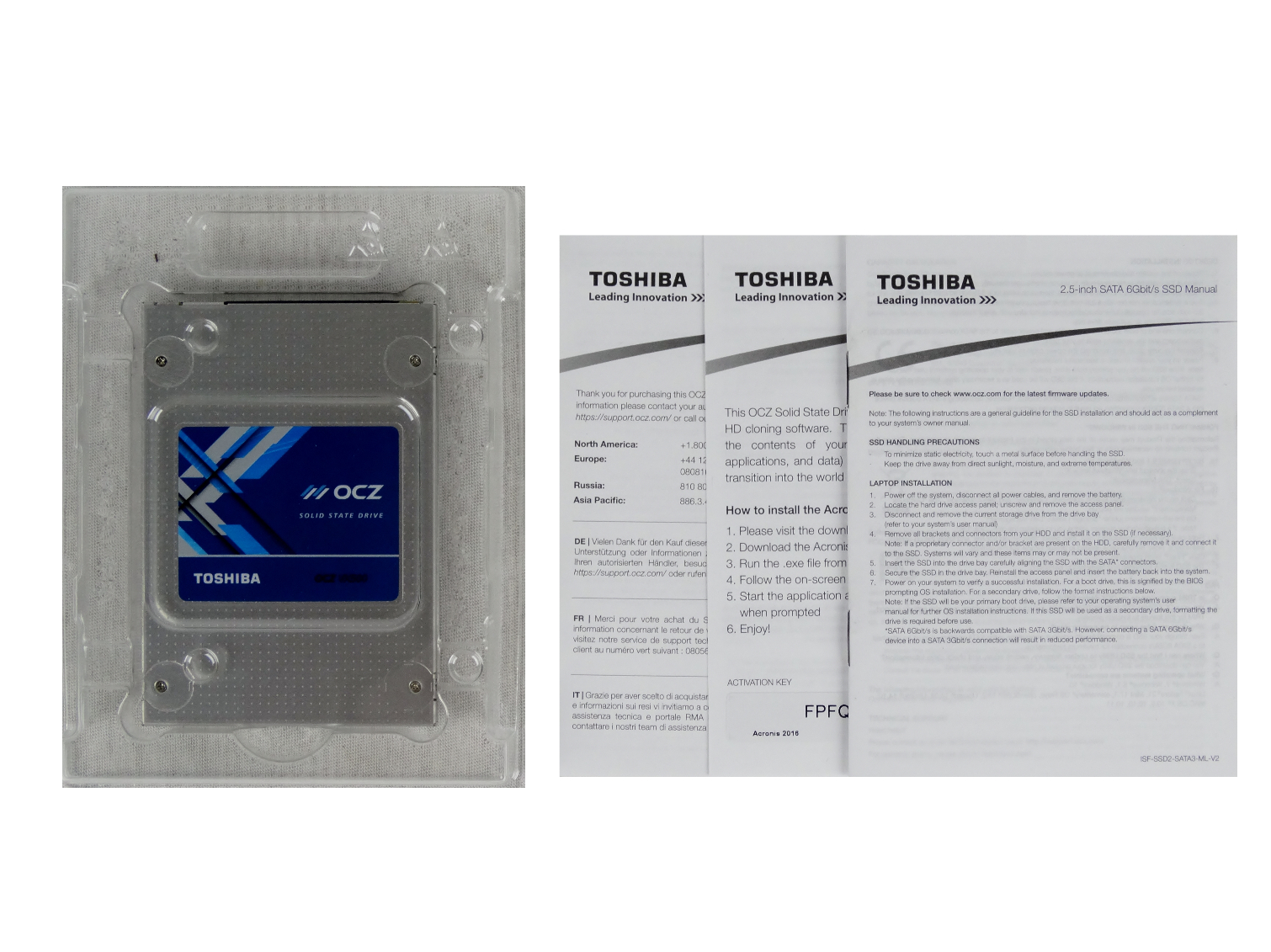
The OCZ name continues to shrink on the package as the Toshiba name increases in font size. The official name of the product is the Toshiba OCZ VX500, which follows the same naming convention as the Toshiba OCZ RD400 we tested a few months back. The VX500 ships with a code for Acronis True Image HD. We found the key in bold lettering on one of the three paper manuals.
A Closer Look

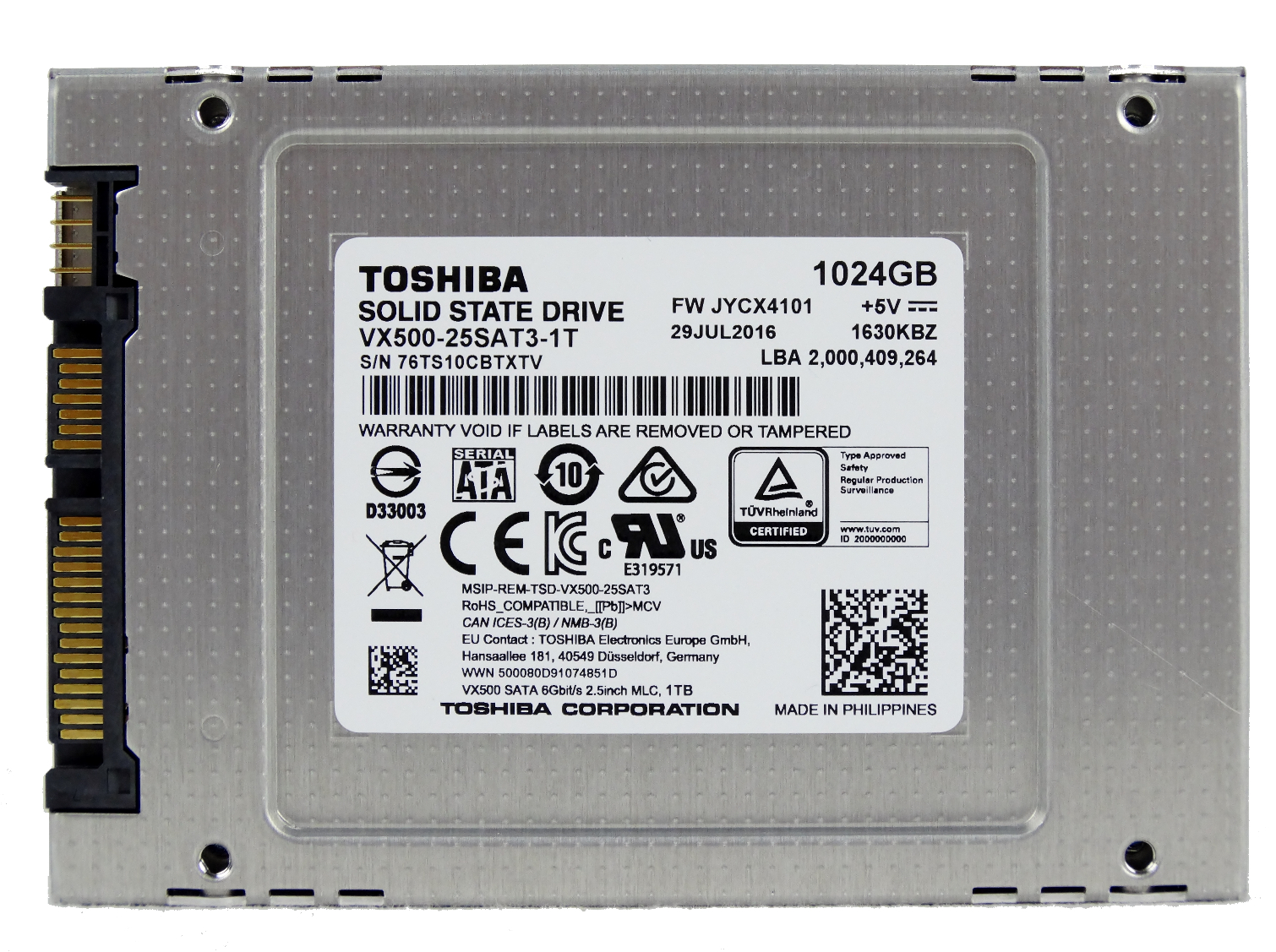
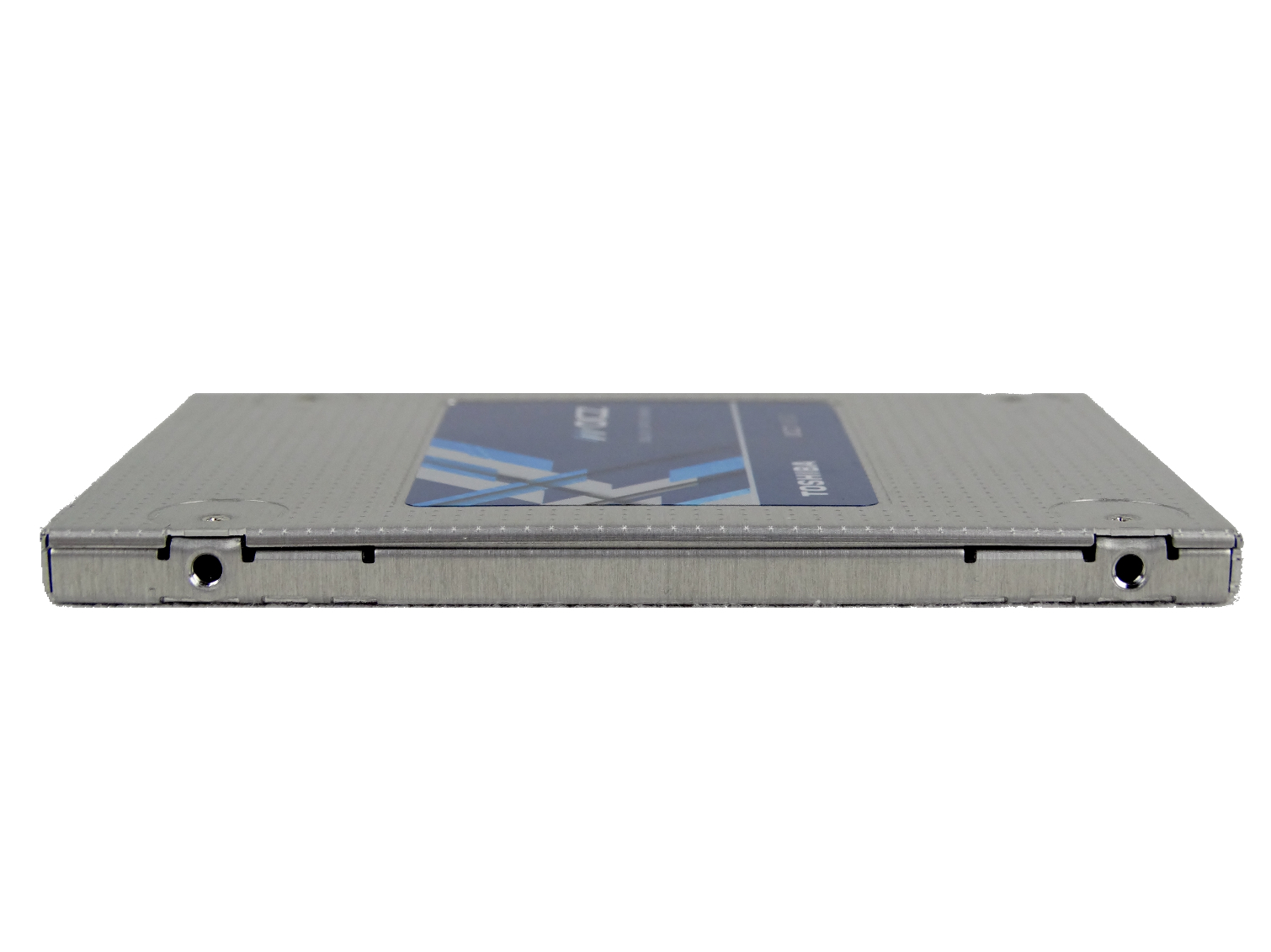
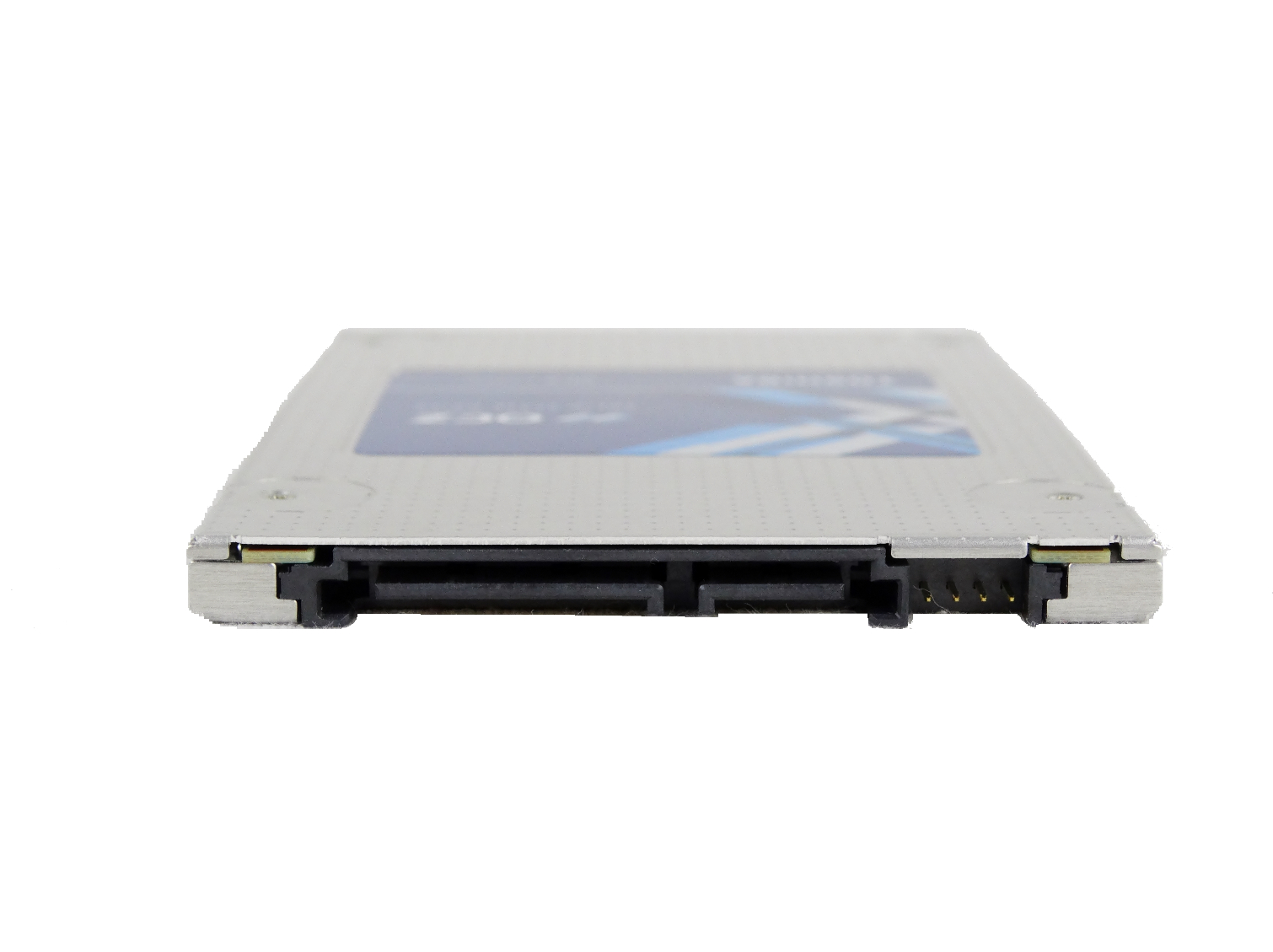
The VX500 series is the first OCZ product to take advantage of everything Toshiba has to offer. The company has used this lightweight case for several years on many of its products.
Inside the Toshiba OCZ VX500
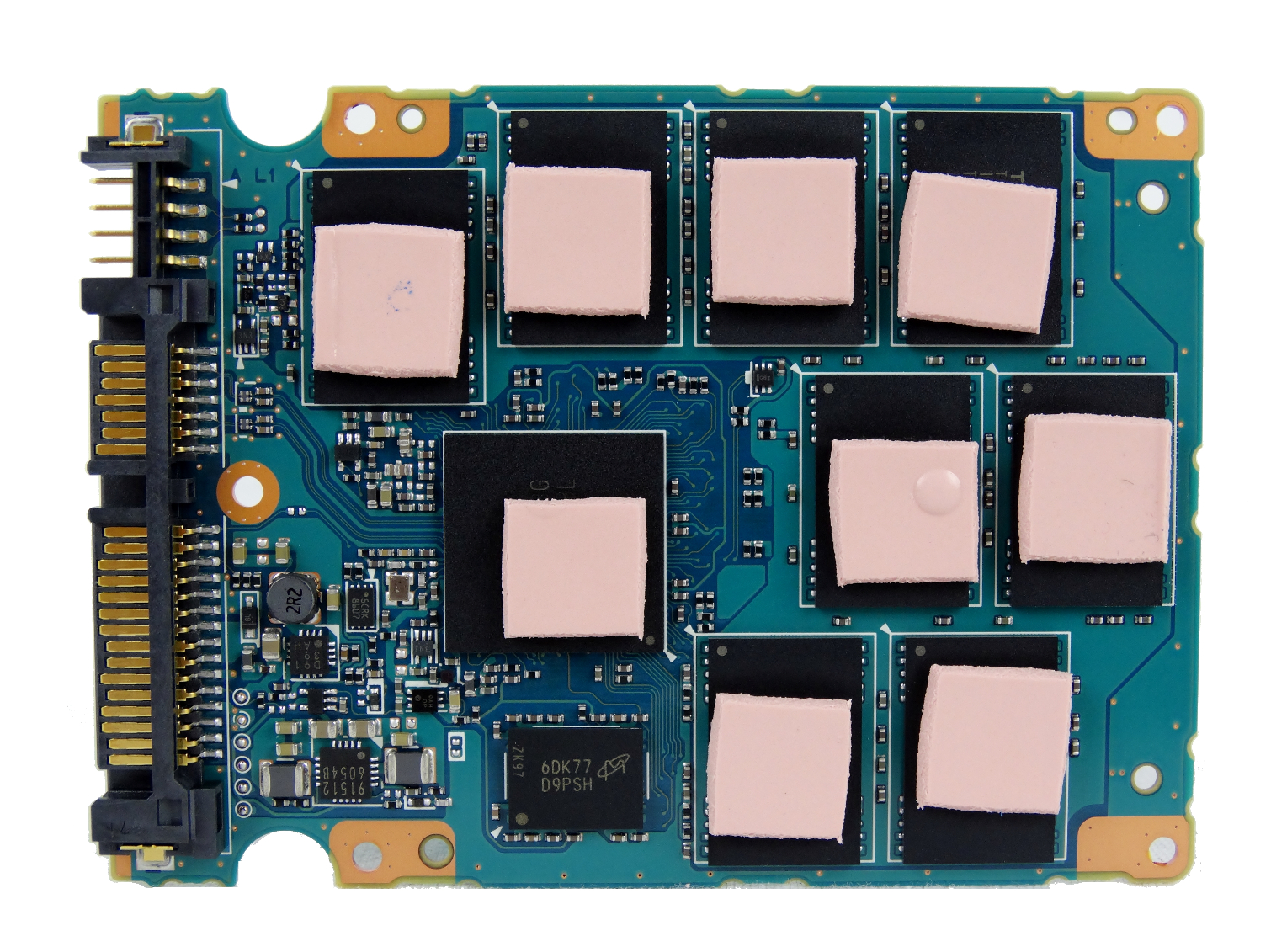


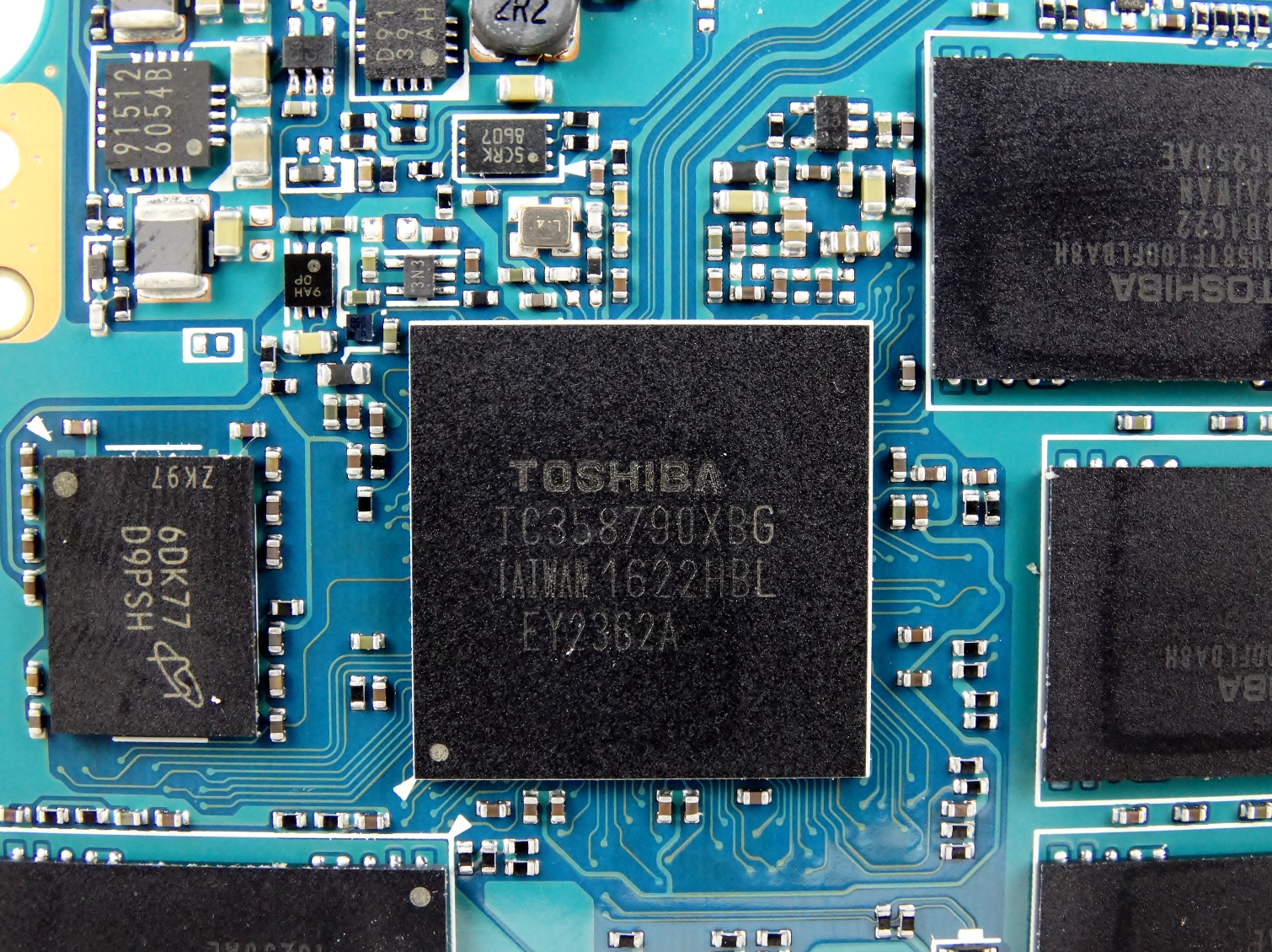
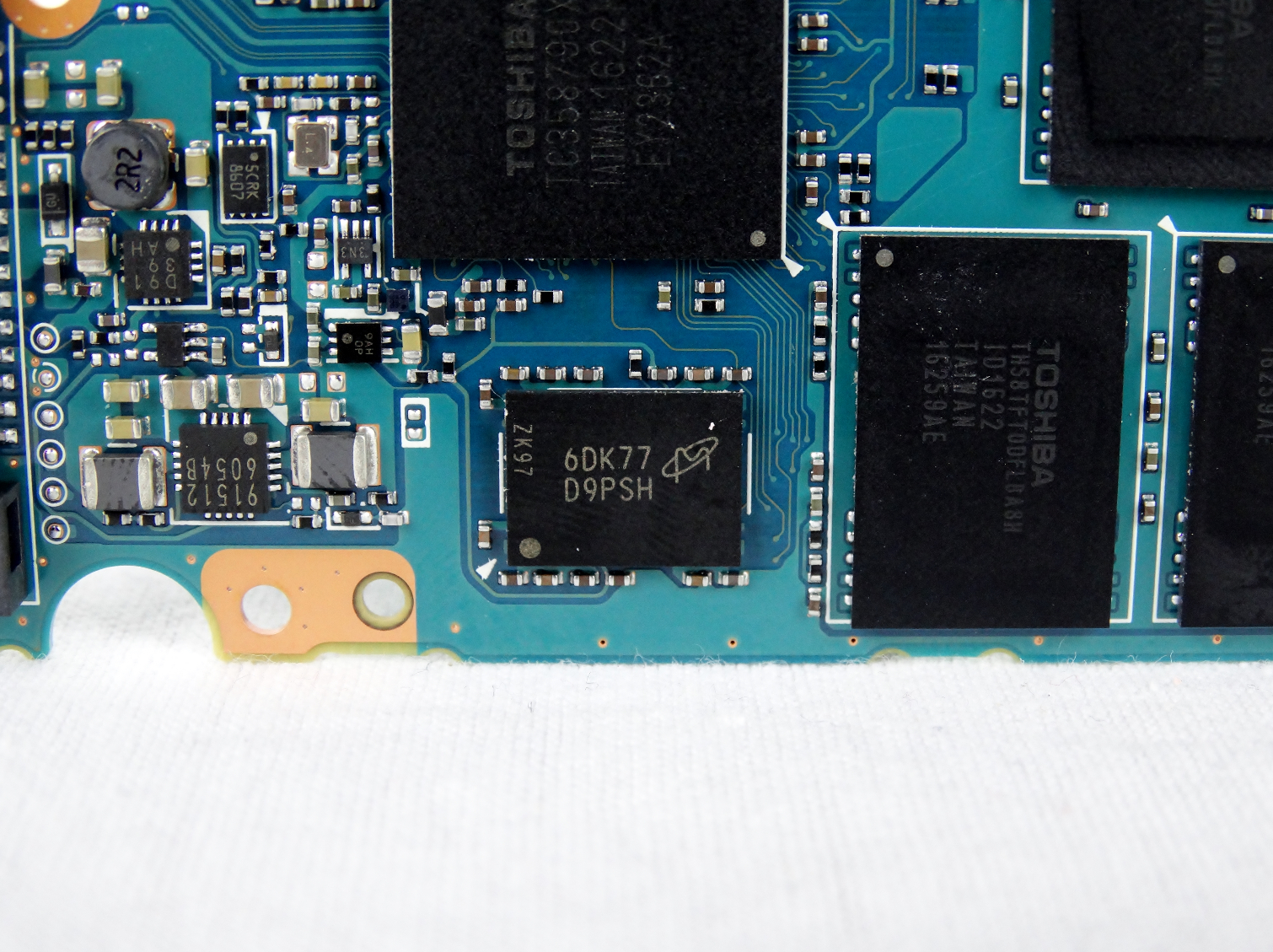

The VX500 is nearly identical to the Q300 Pro we tested in July. Toshiba recently transitioned the Q300 series from A19nm NAND to the same 15nm MLC NAND used with the VX500, so they are essentially the same product. The same controller carries over, and it is even accompanied by the same single-sided printed circuit board. The VX500 1TB is the only model to employ a DRAM buffer.
We did not test the 1TB Q300 Pro model, and could not find any documentation that outlined the DRAM arrangement, so DRAM might be the only differentiator between the 1TB VX500 and Q300 models.
We have the three largest VX500 capacities in-house for testing, so let's get to it.
MORE: Best SSDs
MORE: Latest Storage News
MORE: Storage in the Forums

Chris Ramseyer was a senior contributing editor for Tom's Hardware. He tested and reviewed consumer storage.
-
Dan2357 Hey Tom's (&Chris) great work with the ssd reviews! Between this and the PM961 review yesterday you guys are really putting out the sort of content I come here to see. Just wanted to say thanks and keep it up!Reply -
Zaxx420 Like many others, I cut my teeth on Ocz drives back 'in the day'...lol Learned a lot of what I know about SSDs on their once awesome community forum. They had the balls to light the way for everyone else when SSDs were in their infancy. And ofc being first carries risks...Ocz took a beating trying to sort out Sandforce's firmware nightmare(s) but ultimately someone had to take one for the team. I'd hate to see the Ocz name and more so the Ocz spirit get absorbed into obscurity. Fingers crossed that Ocz can come out guns blazin' when Tosh finally gets BiCS to market. Lord knows they have the resources to duke it out with Samsung at the top but as it sits they are more focused on the more lucrative enterprise market.Reply -
ssdpro In defense, consumers that feel "No 3D, no sale" are victims of marketing magic. You will never experience the difference between planar mlc and "3D" in a high performing SATA device.Reply
But the negative, quoted directly from the article: "I really hope the OCZ portfolio doesn't turn into a rebranded version of Toshiba's OEM and retail products with a new package, sticker and software access. Is this what OCZ has become?"
At this point, it appears that is what it HAS become. Also, as of right now, from the moment this review and others went live OCZ still hasn't listed this product on their website (will change I am sure but sums up their organization). -
Design1stcode2nd Maybe I'm missing something but the real world application graph is what I'm focusing on. It just confirms for me that your average user or gamer will see no real difference in a SATA SSD so go for a TLC or 3D TLC version. I'm probably going to end up with a Trion 150, I just don't see the need to go with an 850 or 850 pro for my use case. By the time the warranty runs out I'll likely have a new Mobo, CPU and be using NVME M/2 anyway. It will also probably be larger capacity for less money as well.Reply -
Modus27 Given the barely noticeable real world differences, I'd take this over Samsung 850 EVO at current MSRP just based on endurance. How did that not make it into a PRO, when you said that was only advantage it had?Reply -
abbadon_34 5 Year warranty? Sold.Reply
In this time dwindling warranties (my recent 8TB Seagate has a 1 year warranty) and the warning given by Kevin Chen about DRAMless going to 12 months this is music to my ears and solid belief in their products.
http://www.tomshardware.com/news/kevin-chen-adata-ssd-industry,32050.html -
mapesdhs I know this review naturally focuses on newer products, but it would be nice to include a couple of older OCZ mainstream models, and even an older top-end model, just to see whether "OCZ" products really have improved compared to what was current not that long ago. Any chance you could add an Arc 100, Vector, Vertex4? Sometimes I feel that SSD reviews tend to do what happens in GPU reviews, not enough comparison across historial timelines to show what the long term trends really are.Reply
Alas, in this case, once again I think price is going to be the deciding factor, and OCZ's more recent products have been consistently too expensive. Shame really, I bought a lot of their older models and am very happy with them, but after the Arc came out their pricing just went up and up, to the point where typical sellers had the Arc 100 listed for more than an 850 EVO, which is nuts. Many never bothered listing the Vector 180 at all.
Btw Chris, please fix those graphs! ;D
Ian. -
CRamseyer I'm limited by how much space I have for the charts. 8 Products is the max for the charts. I would love to increase the comparison depth but I can't. I have nearly ever consumer SSD released since this category started. I would love to release a set of charts with hundreds of drives.Reply -
TMRichard Chris, what I would be really interested in seeing with your test data is an interactive 'chart' which allows us to select the drives want to compare it to. Even if it still maxes out at 8 items that would be more that sufficient. I know there are other sites that will allow us to do this but I would like to know I'm using a reliable, trustworthy set of test data so I can make an informed decision on the item.Reply -
mapesdhs Reply18595925 said:I'm limited by how much space I have for the charts. 8 Products is the max for the charts. I would love to increase the comparison depth but I can't. I have nearly ever consumer SSD released since this category started. I would love to release a set of charts with hundreds of drives.
Perhaps a different chart format? Or a selectable list as TMRichard describes?
Ian.
